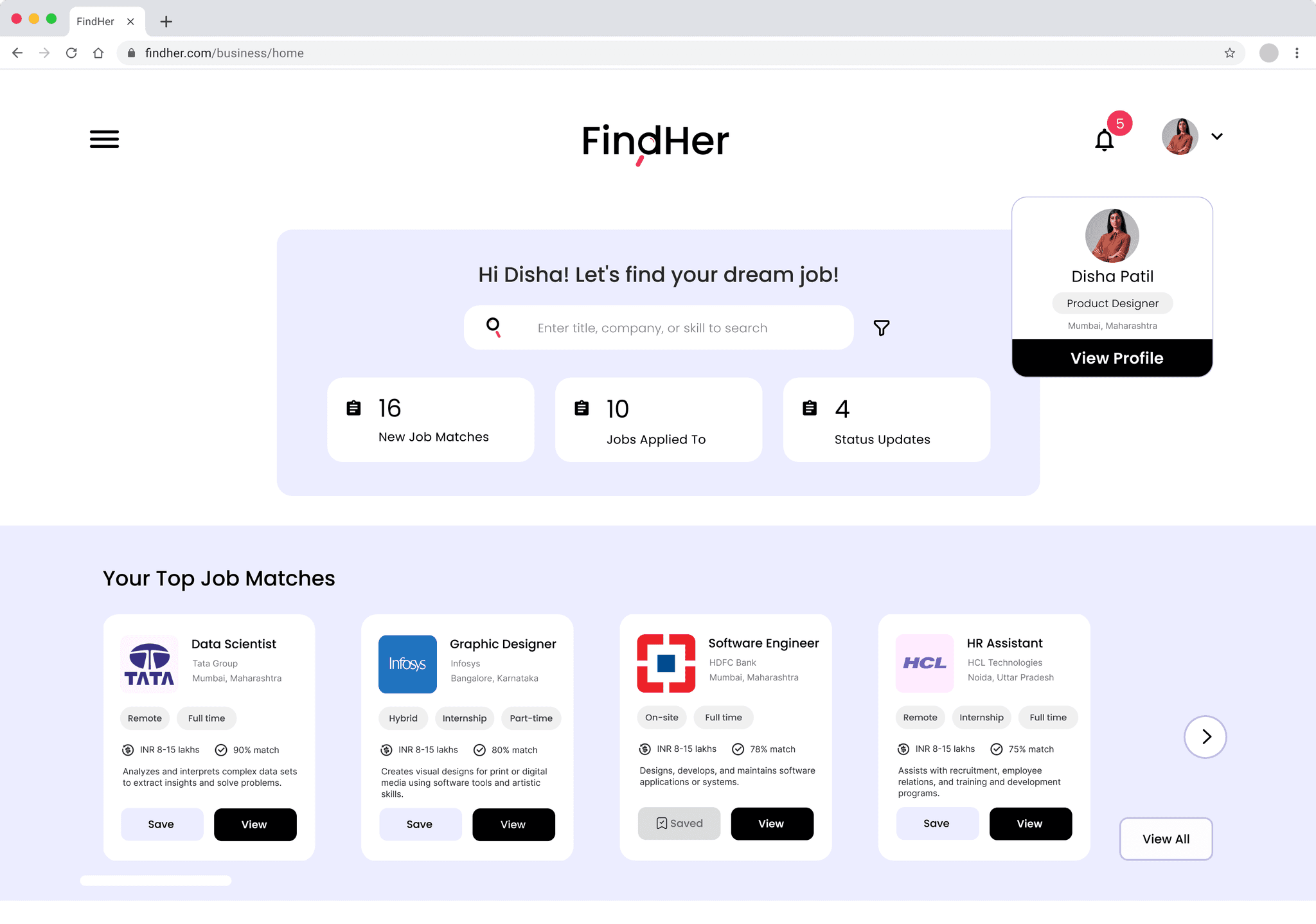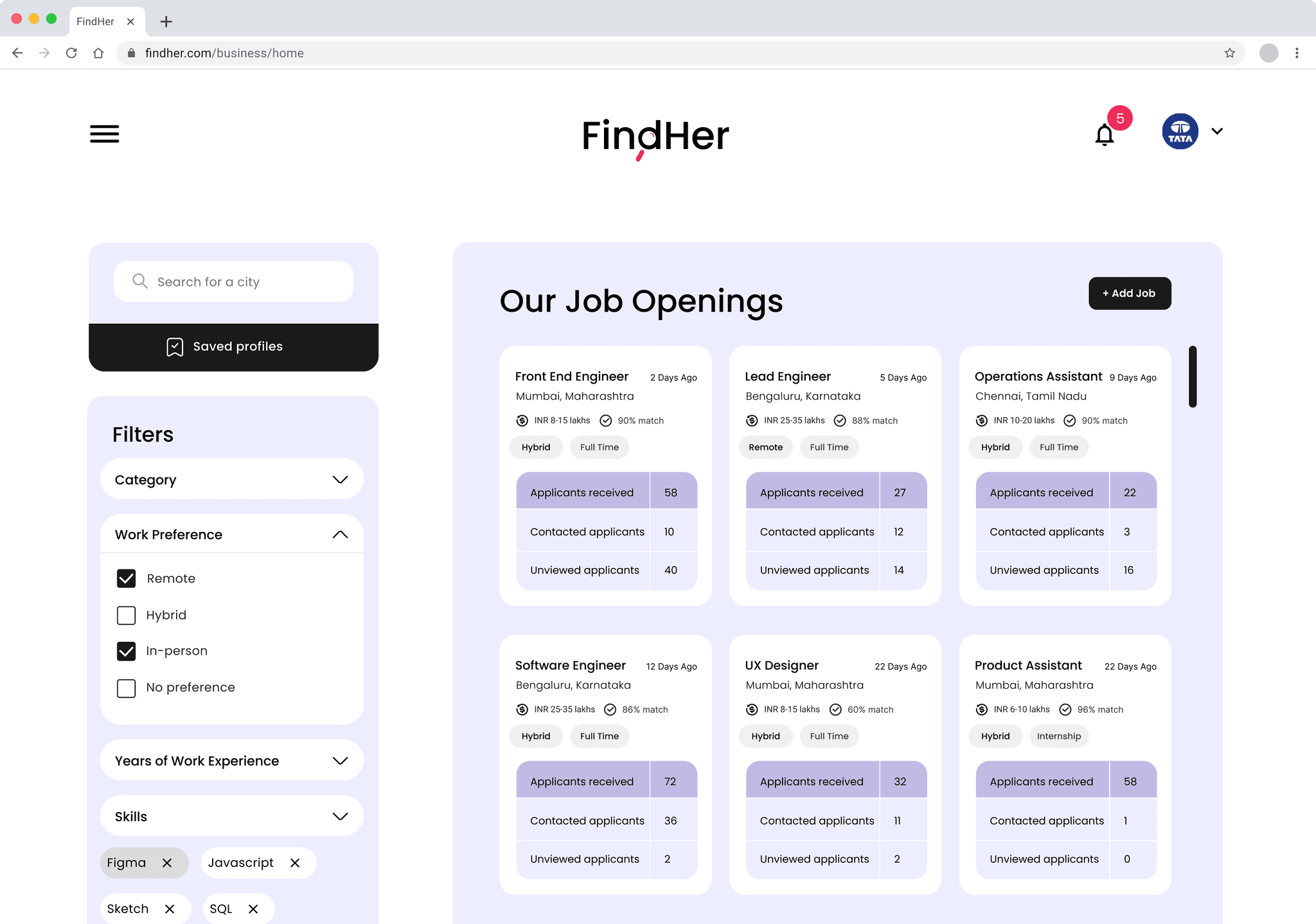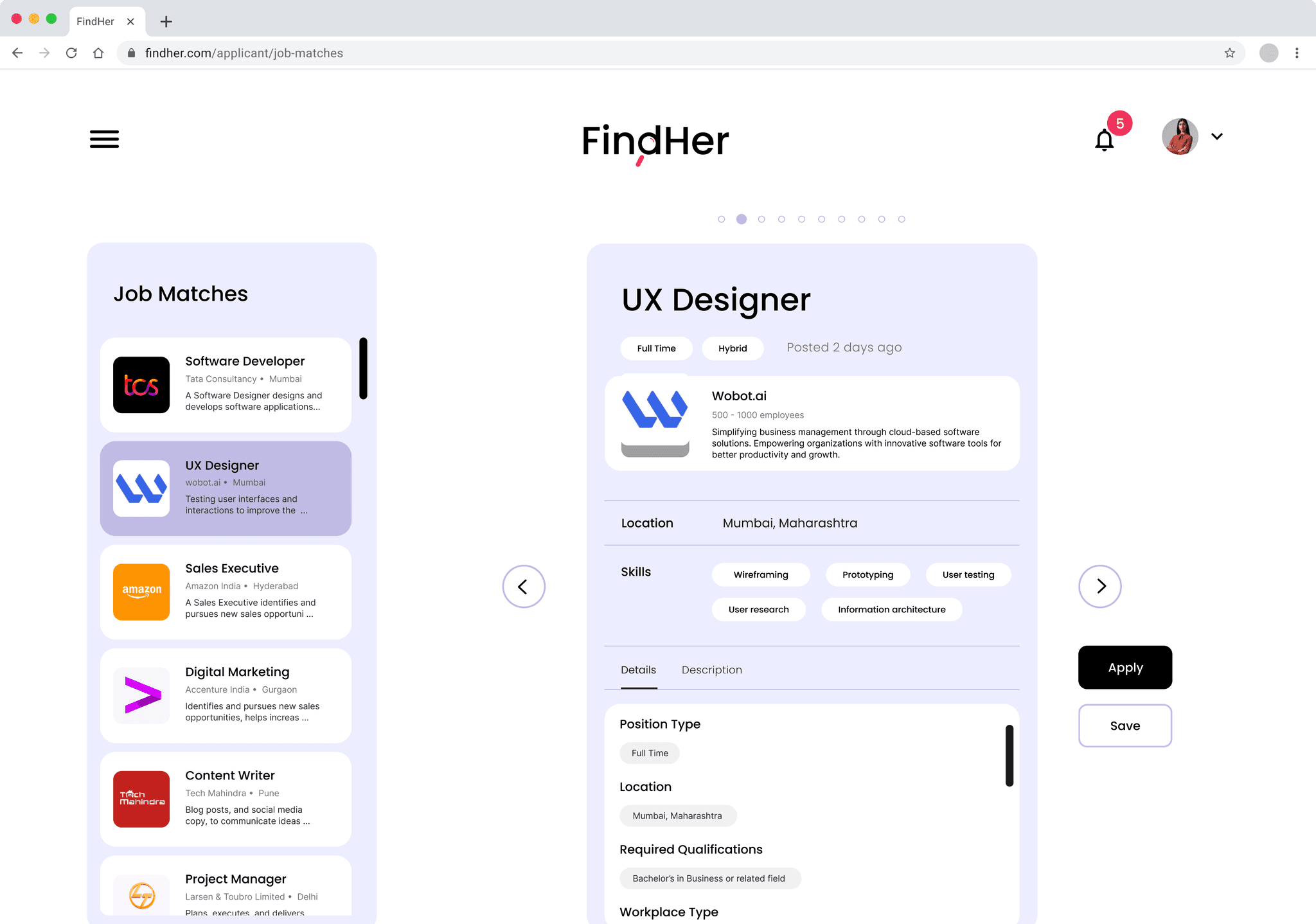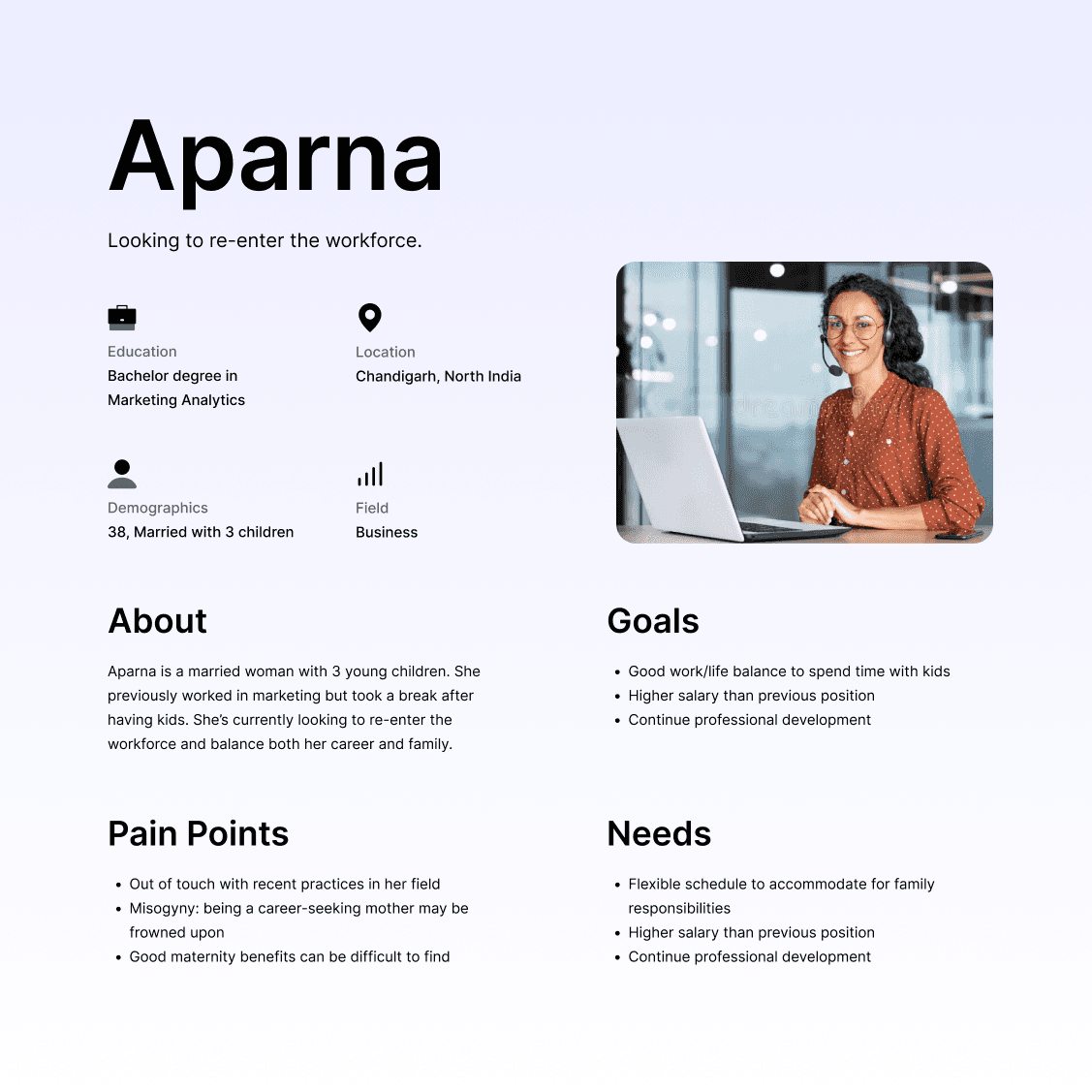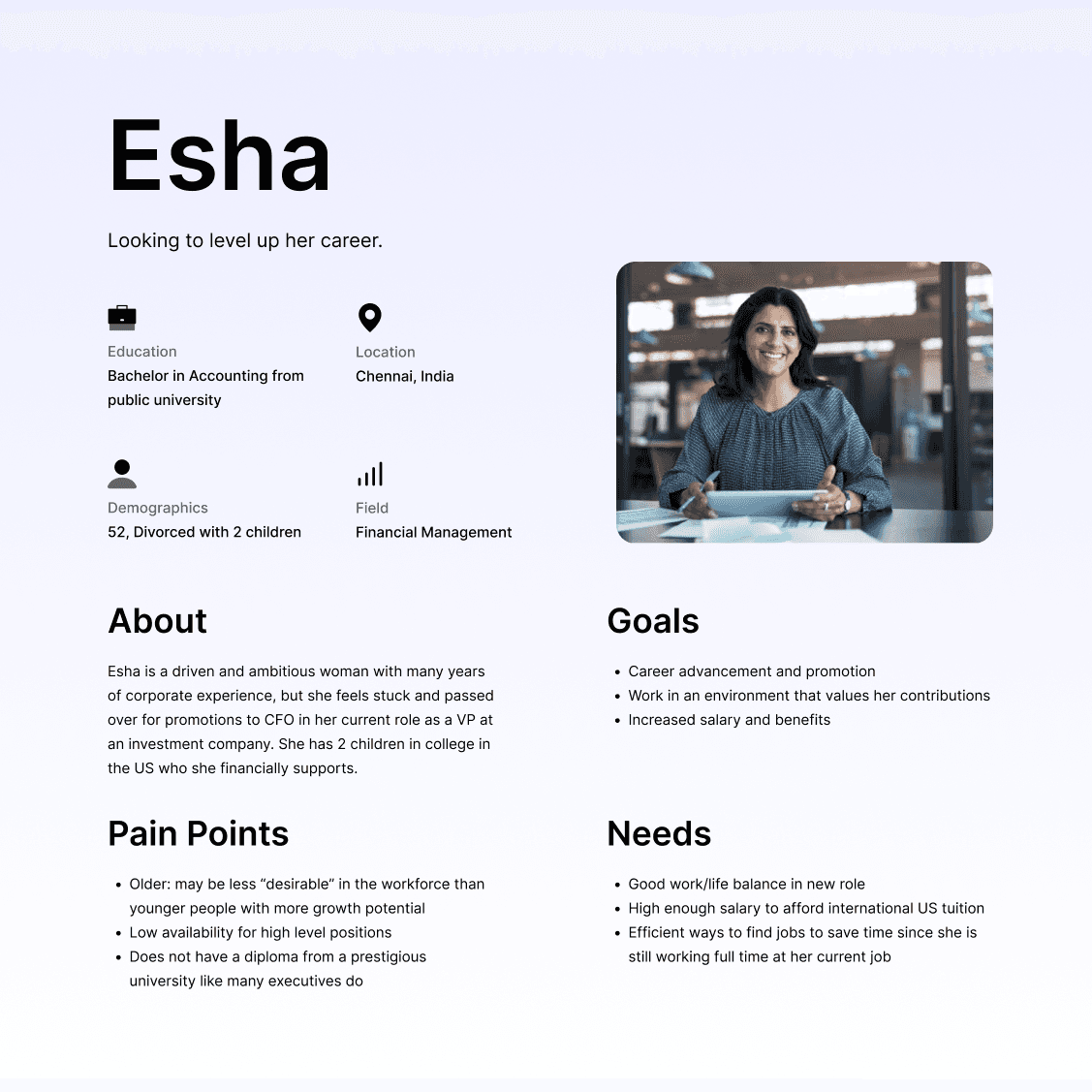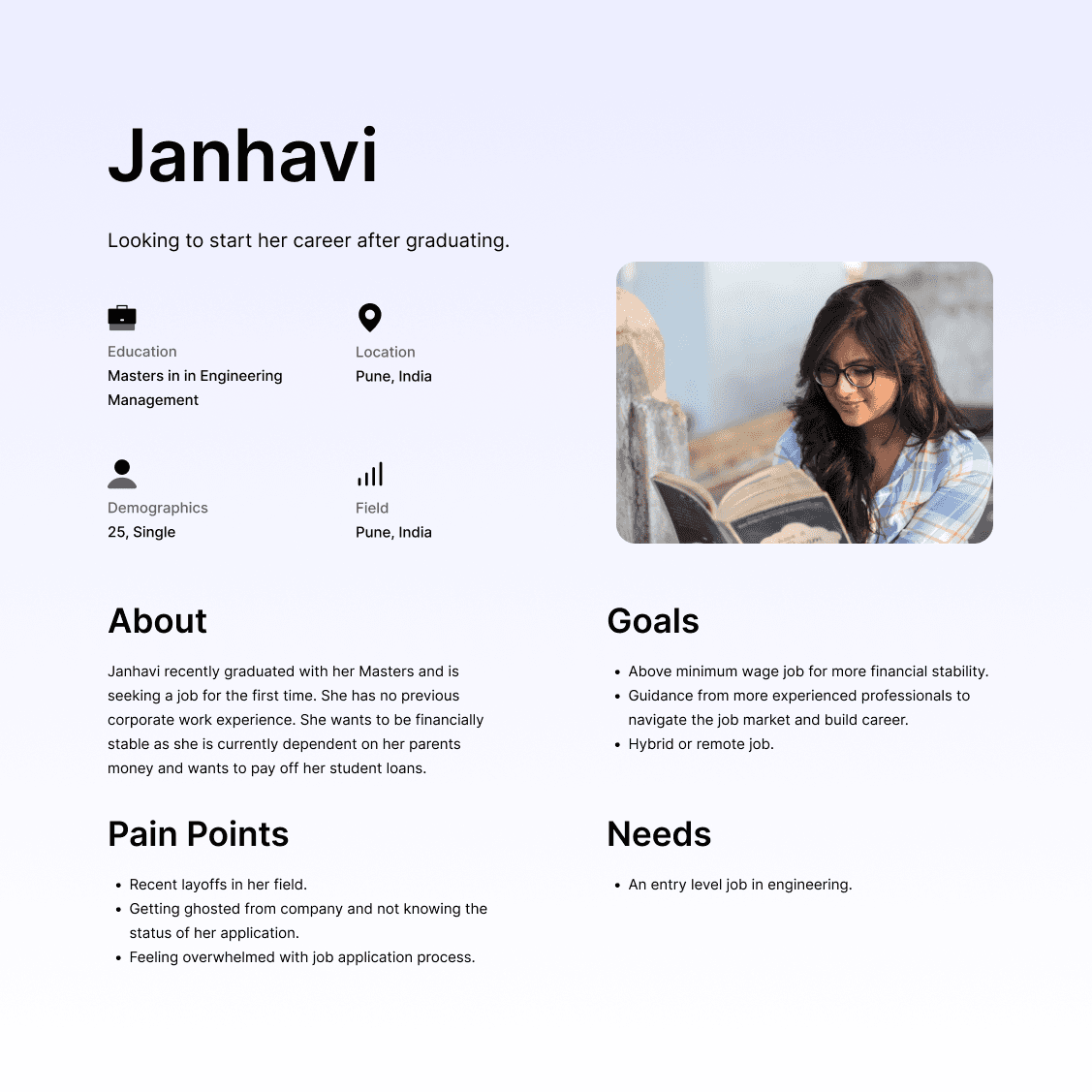FindHer

What this case study showcases:
Design Leadership, Stakeholder Management, User Research
Project Date:
January - April 2023
Tools:
Figma, Adobe Illustrator
THE PROBLEM
Only ~25% of almost half a billion eligible Indian women were formally employed as of 2020 (Forbes) . There are a myriad of contributing factors, including workplace discrimination, a lack of childcare infrastructure, and inflexible working hours.
FindHer’s founders, two female entrepreneurs from India, wanted to help combat these barriers. They conceived of FindHer, a job website to empower women in India to find meaningful employment. Our team of 5 designers and 7 engineers at Generate partnered with them to develop FindHer.
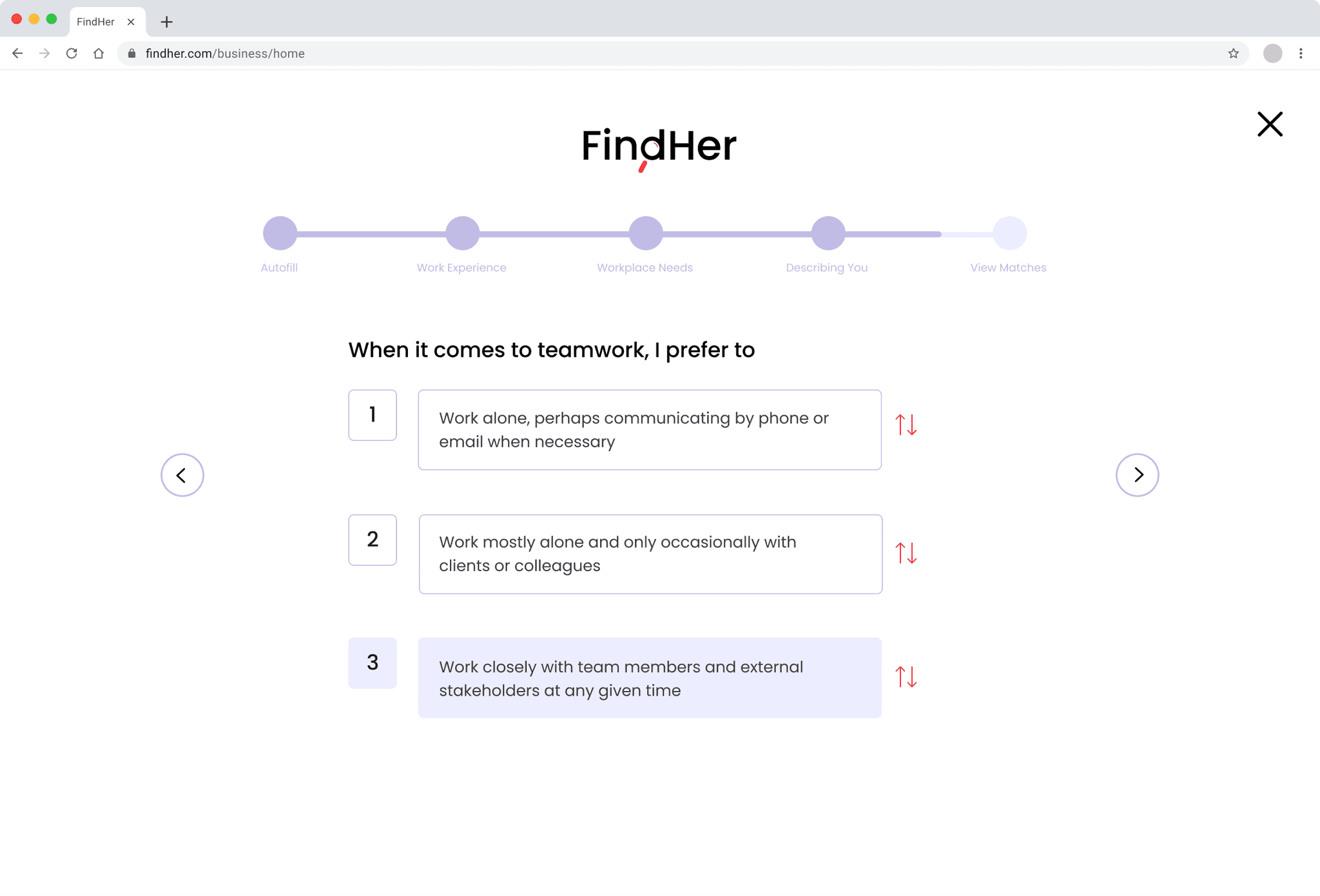
FindHer’s onboarding questionnaire collects data about a job seeker’s past experience, skills, and preferences. The site’s algorithm uses this data to calculate “Match Scores,” which indicate the compatibility between a job seeker and a job posting.
MY ROLE
As Design Lead, I managed 4 designers, working alongside a Tech Lead managing 6 engineers and a Project Manager.
I was responsible for:
Communicating and garnering buy-in with the client on all product and design matters alongside the Project Lead.
Managing the project schedule and overall product milestones, assigning designers tasks based on their skills to meet project deadlines.
Guiding design exploration and implementation in weekly design critiques, 1:1s, and office hours with designers.
Collaborating with the Technical team on front-end implementation.
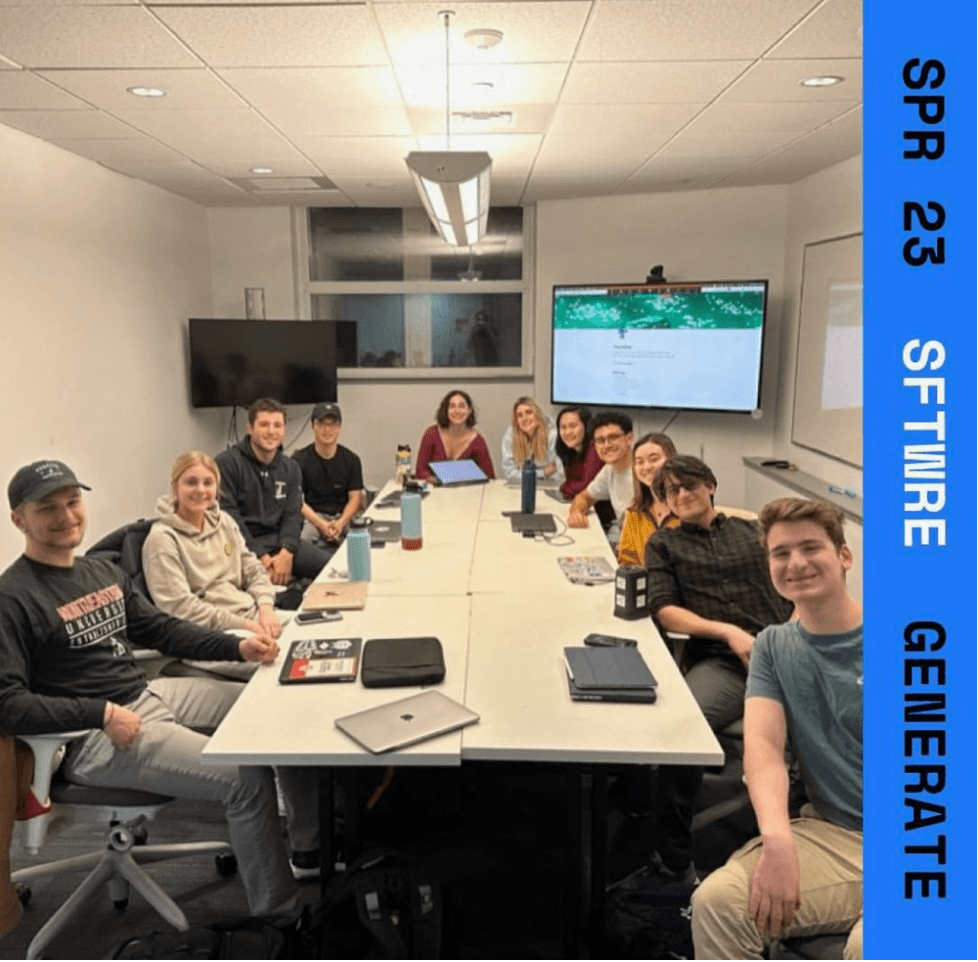
DELIVERABLES
Under my leadership, the design team delivered our clients:
11 high fidelity flows, the most of any Generate team to date
Insights from user interviews with professional women working in India, the first Generate team to use user interviews in the design process
User process workflows and recommendations for future product features
Brand assets including a logo, color palette and typography
USER INTERVIEWS
To better understand our target users, I wanted to ensure we were hearing from real women in India about their experiences with the job market. Through my network, I set up interviews with 4 women who grew up and currently work in India. We wanted to gather insight on the ways in which they had previously found jobs, especially about online platforms they had used, and how their experience finding a job could be improved.
KEY PAIN POINTS FROM INTERVIEWS
FEATURES DESIGNED IN RESPONSE TO PAIN POINTS
PROTO-PERSONAS
From our conversations with our client and user interviews, we constructed 3 personas to identify core demographics of FindHer’s target users.
BUILDING USER FLOWS
Our team took all the specific questions our clients wanted to know about job seekers and business users and used them to map out the site's sign-up and job questionnaires. I asked each designer to map out a part of each flow so that we all understood the data collected about each user and job posting.
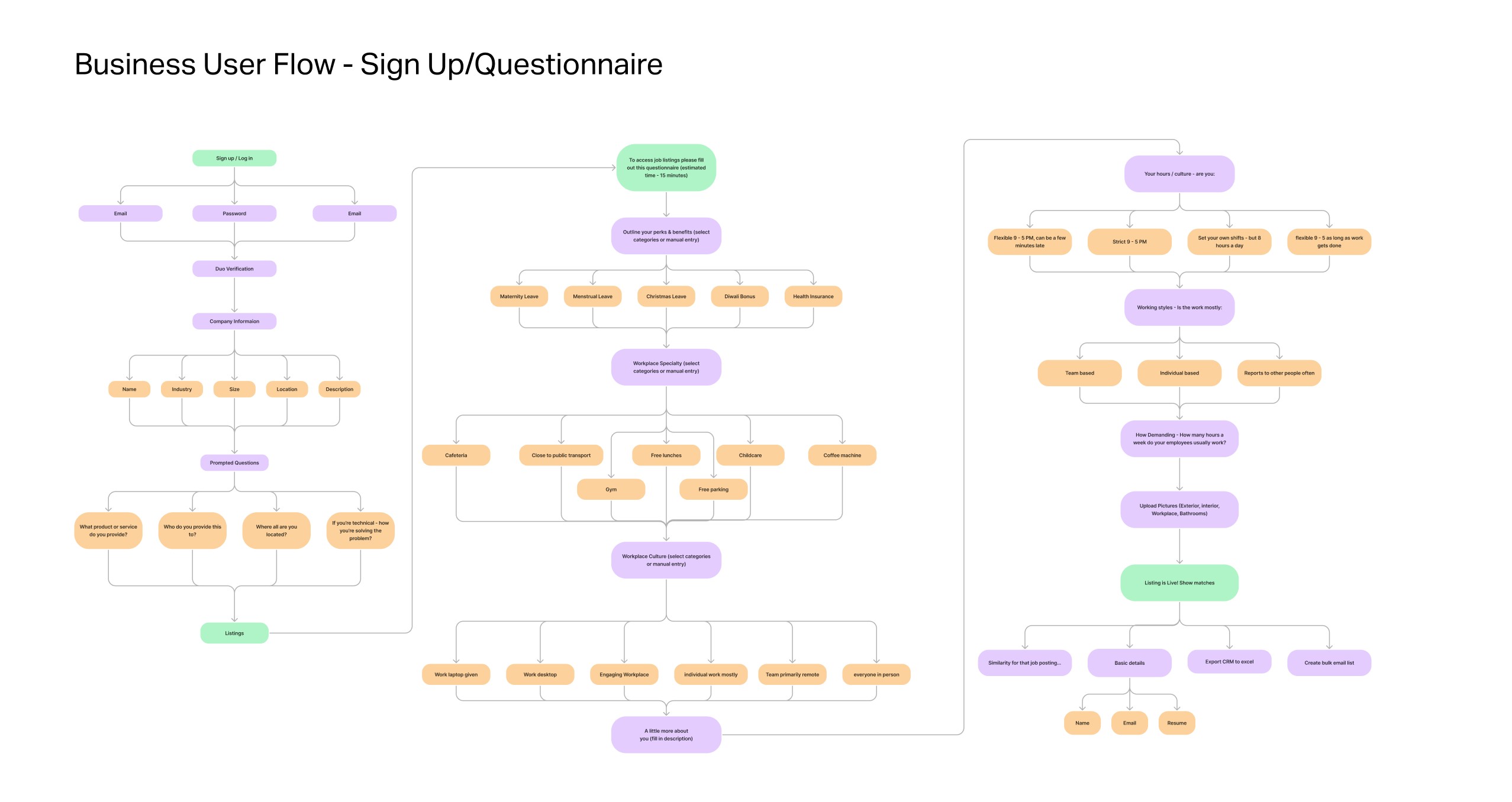
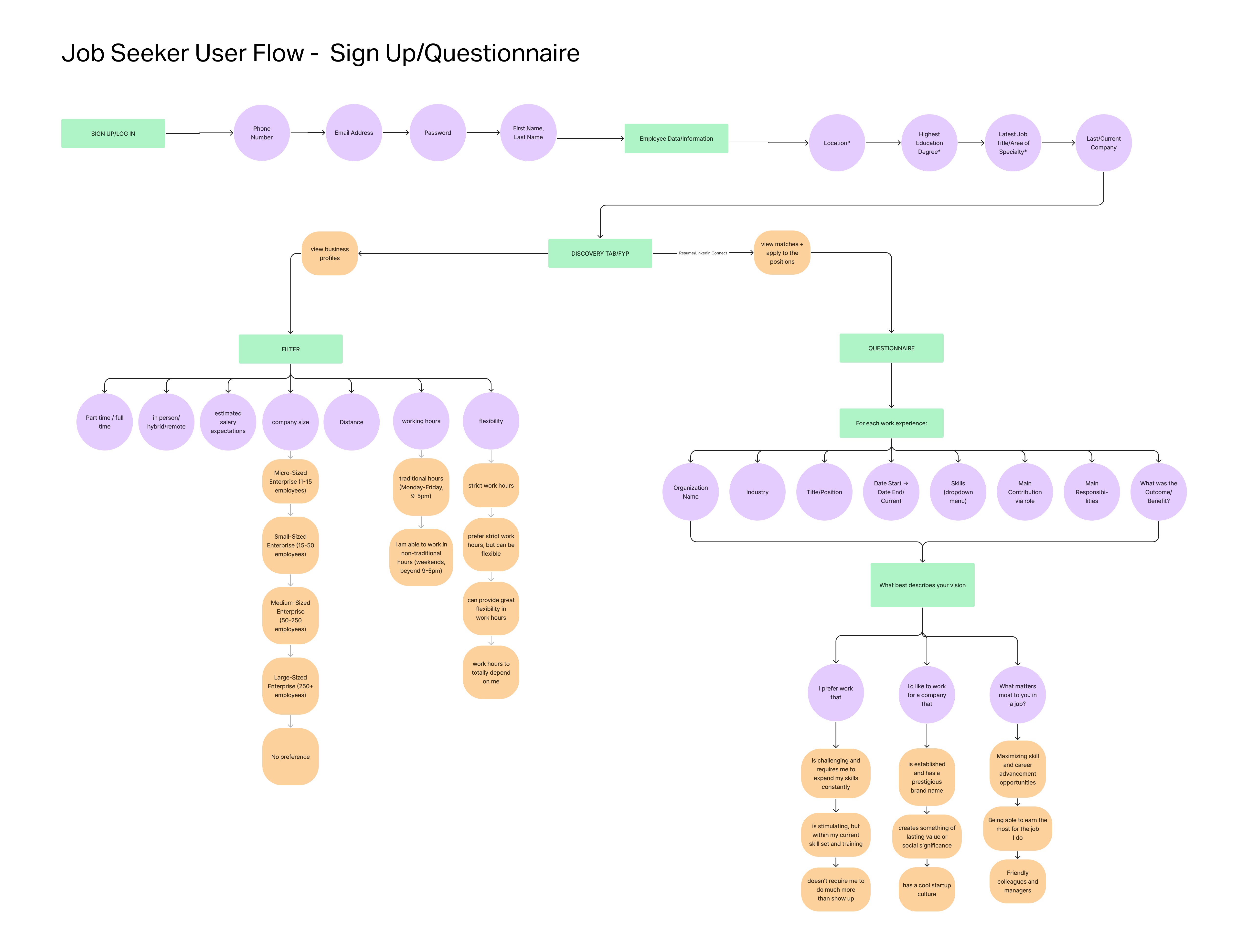
EXPLORATIONS OF SURVEY UI DESIGN
The complex data collected from FindHer's questionnaires was critical to their business model. These questionnaires capture nuanced information about job seekers's and company's preferences which help deliver the high level of customization that sets it apart in the competitive job search platform market.
FindHer's questionnaires required a variety of question types to capture this diverse set of data, from ranking answers to scales to multi-select drop-downs. Below are some of those early explorations and then their transformation in the final designs.
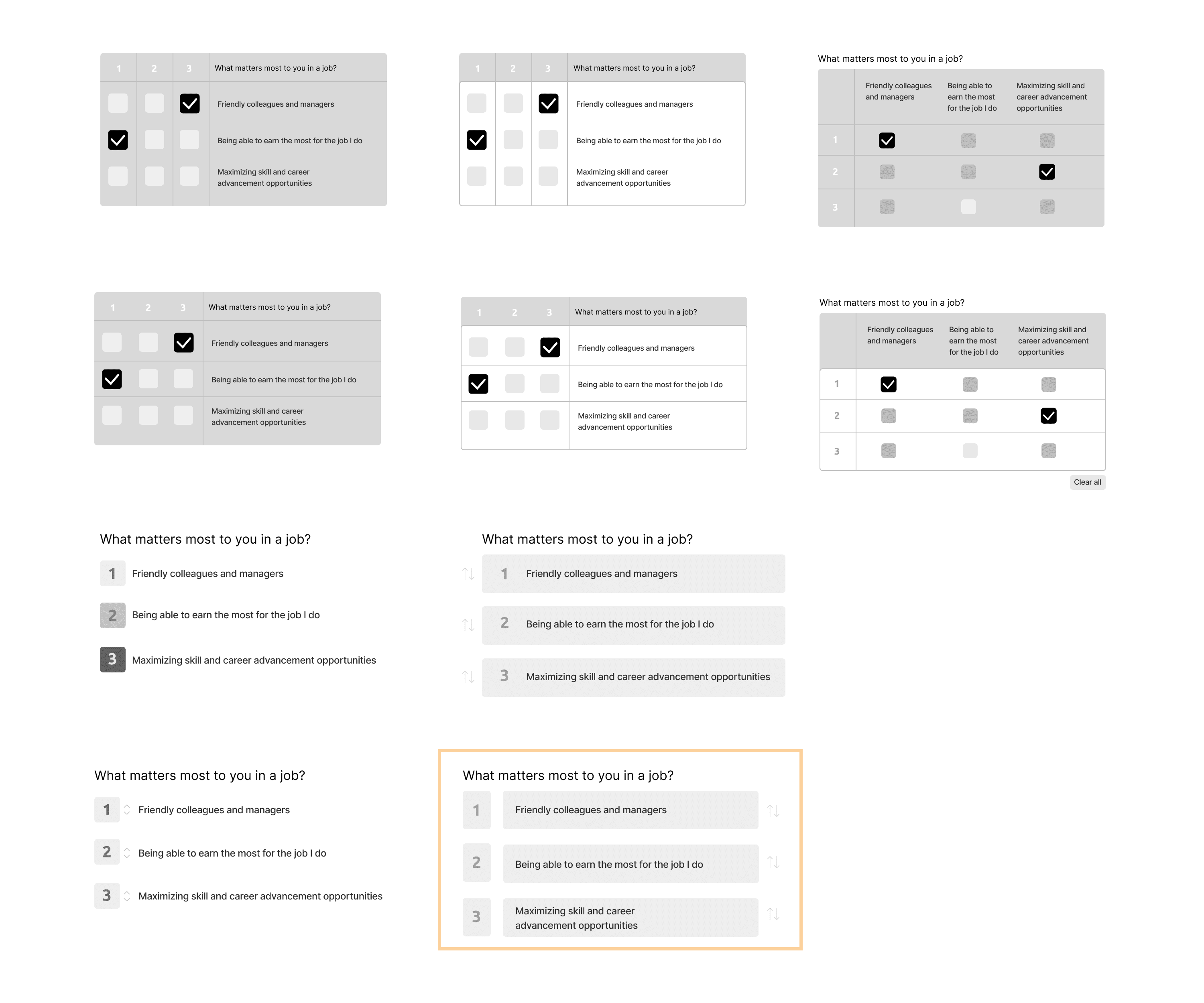
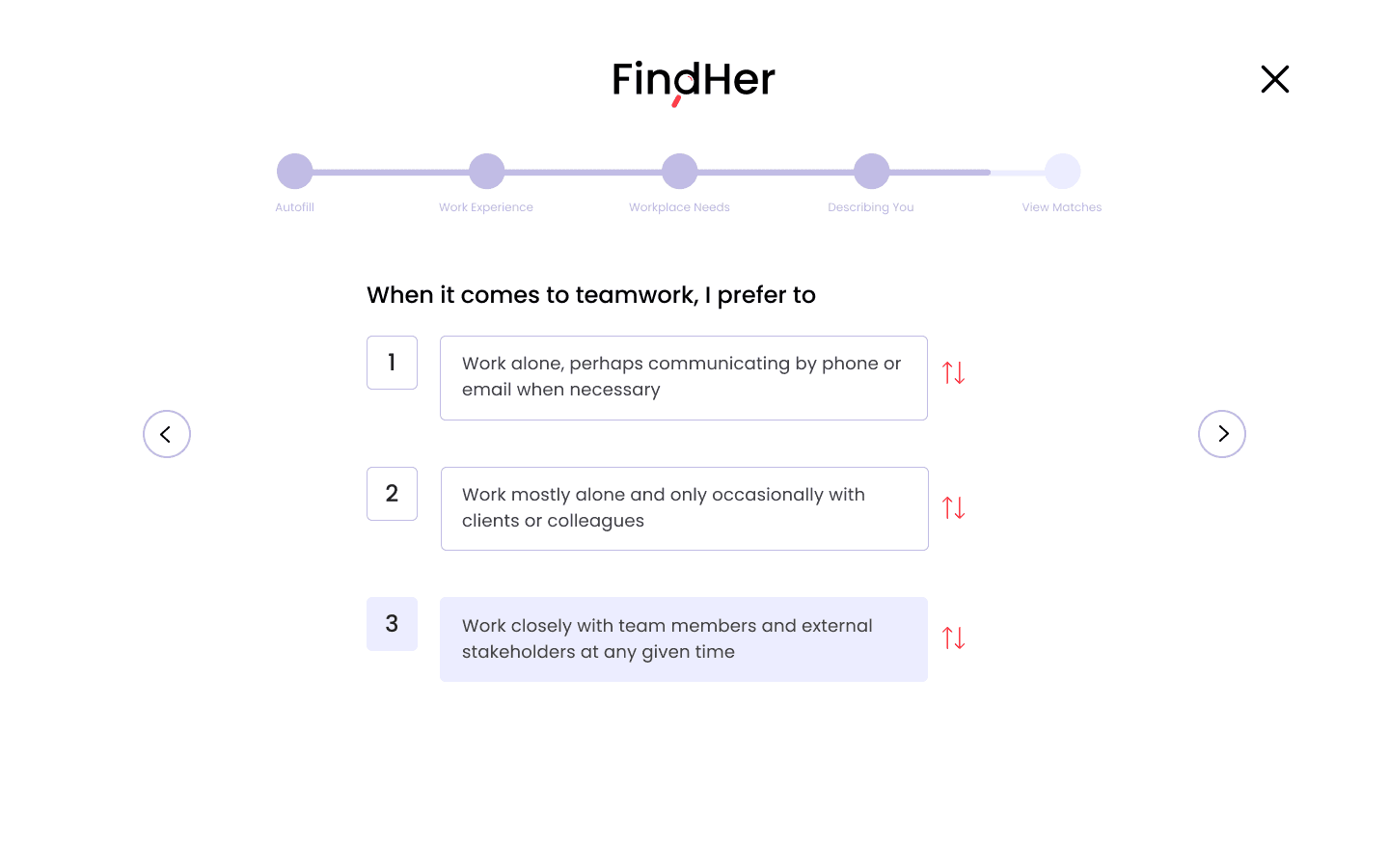
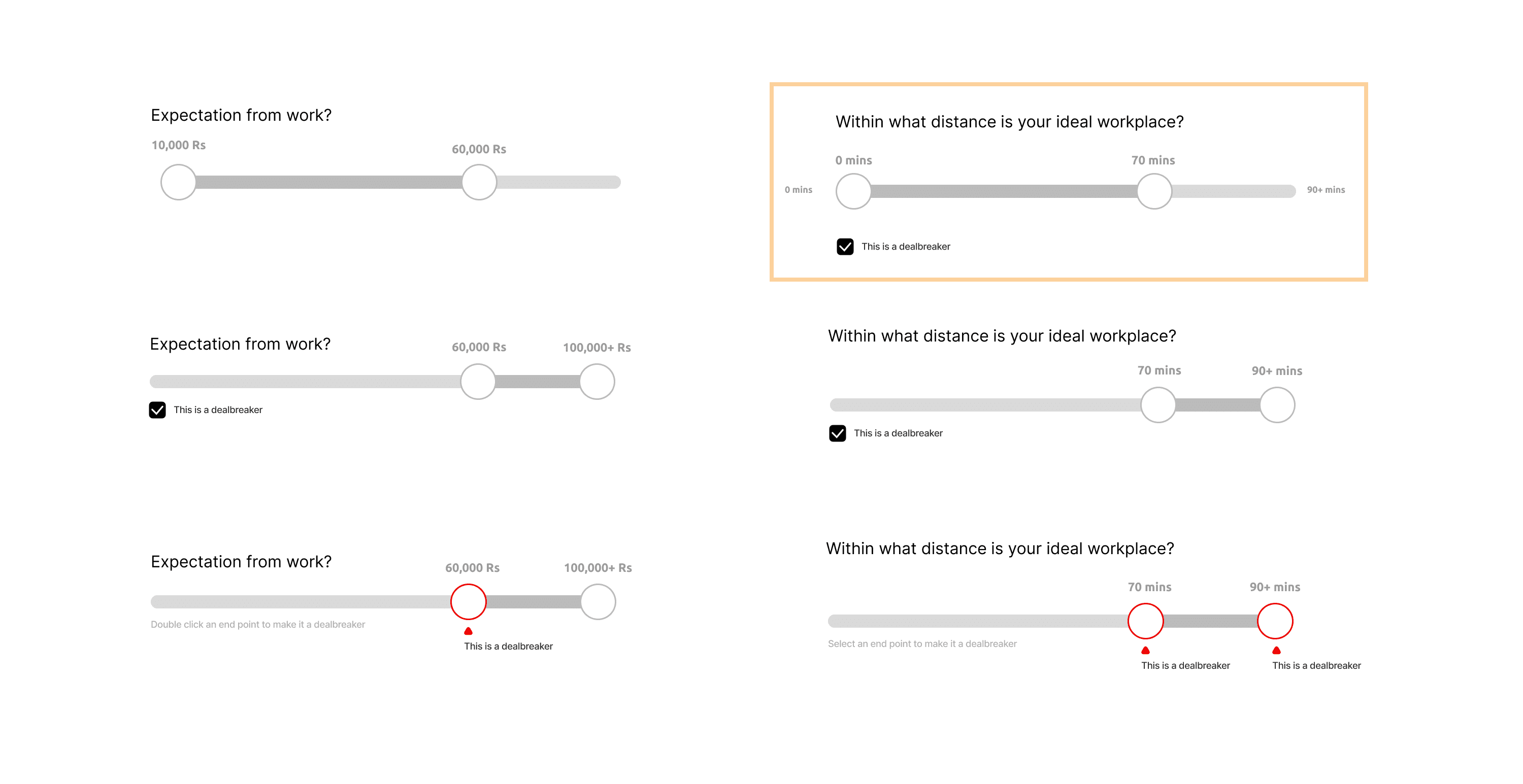
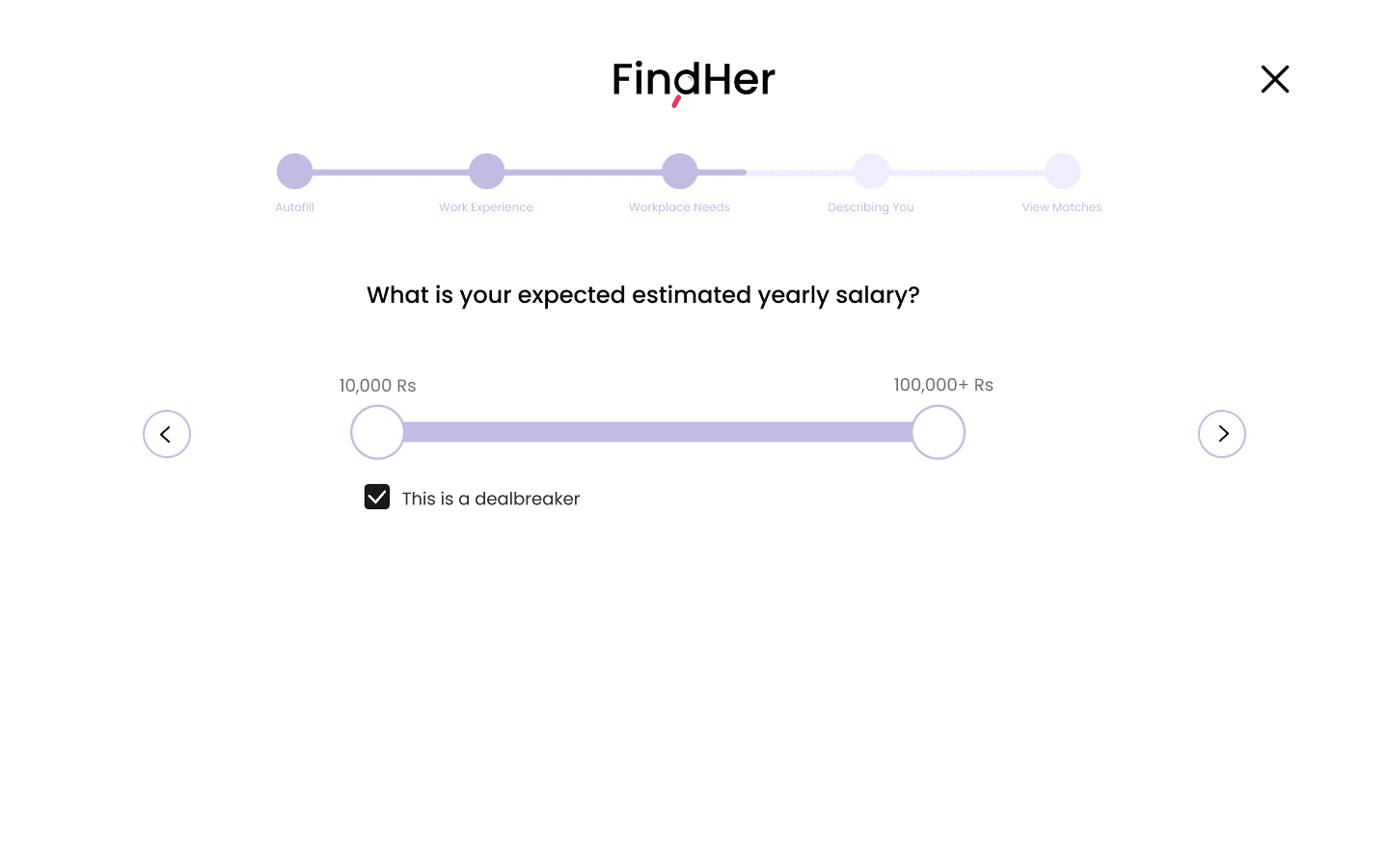
DESIGNING CROSS-CULTURALLY
I learned a lot about cross-cultural design through this project. One moment in particular stands out in my memory
TAKE-AWAYS
Through leading FindHer's design team, I gained a much deeper understanding of all the moving parts required to manage a team and developed a more collaborative approach to problem-solving—balancing user needs, technical feasibility, and client expectations.
